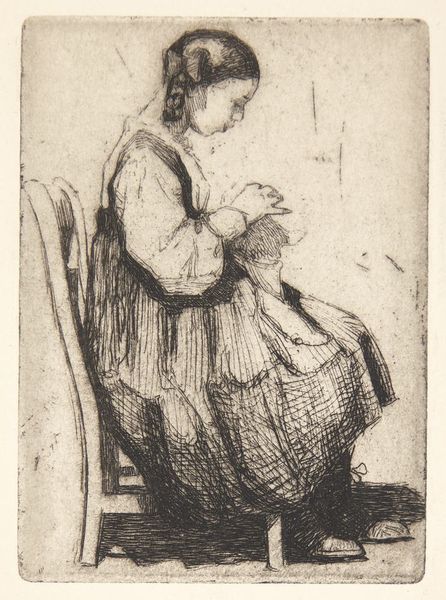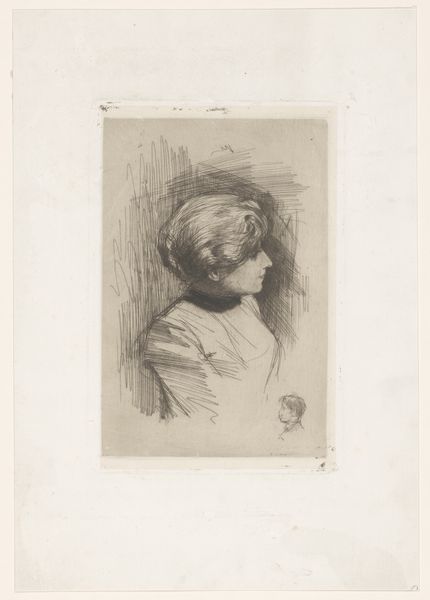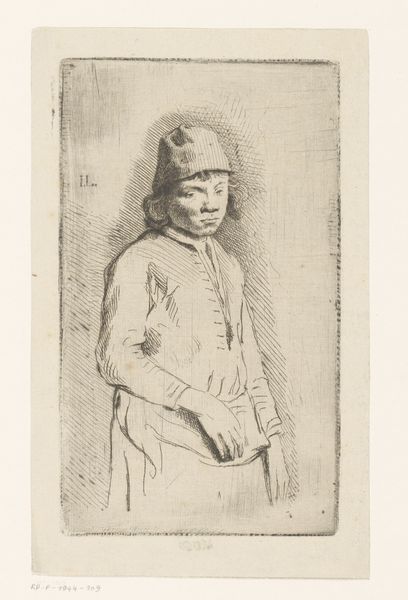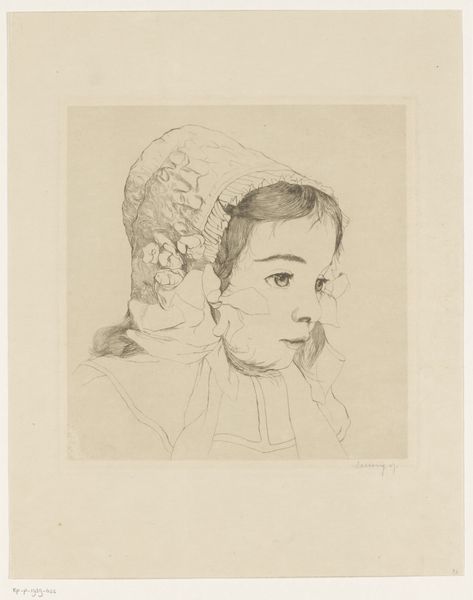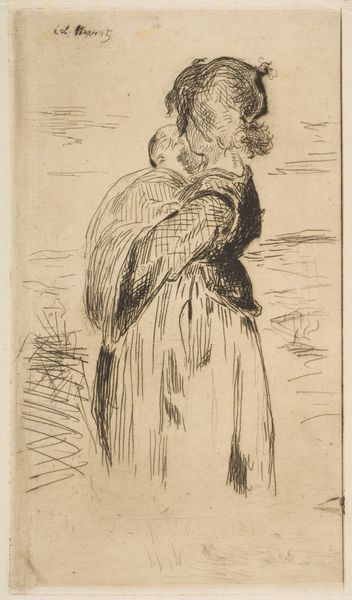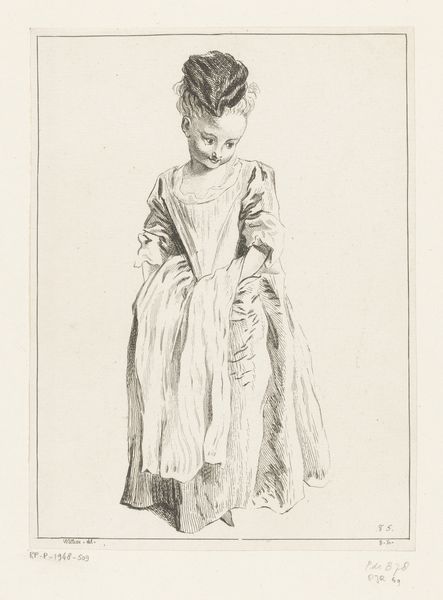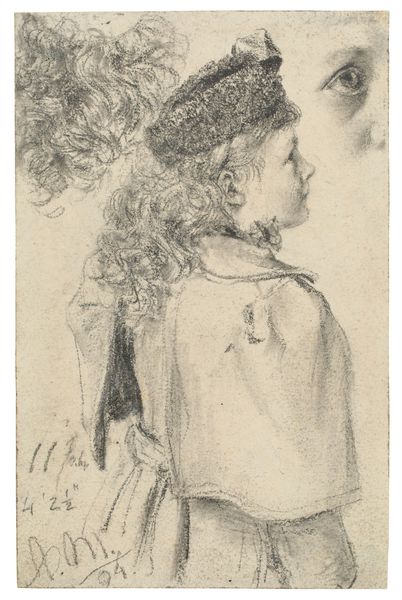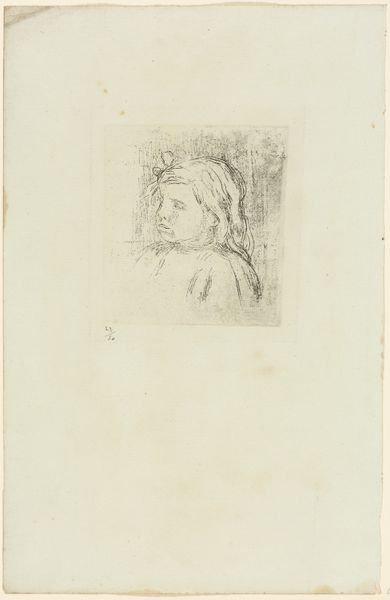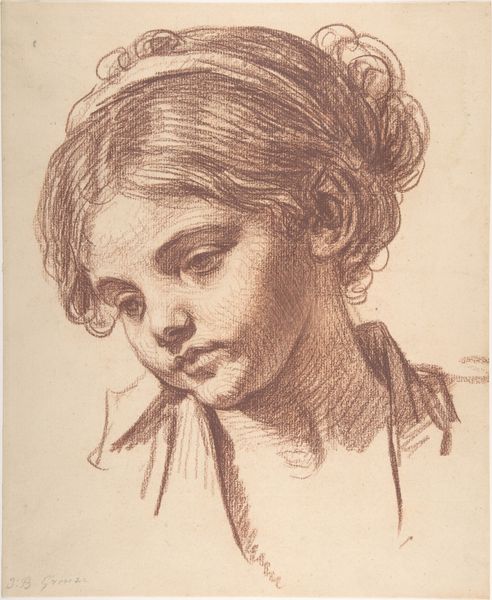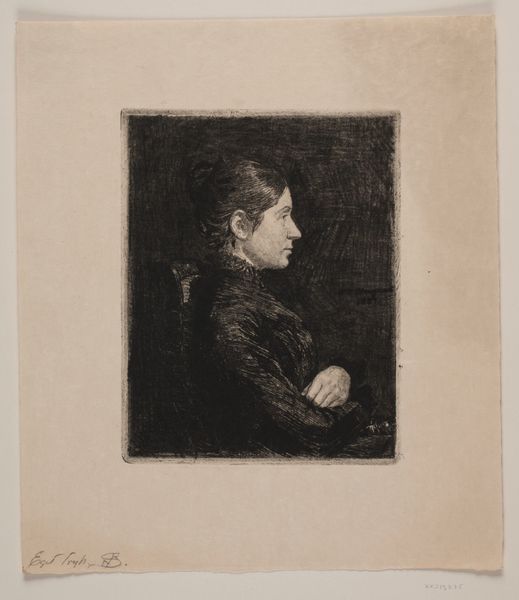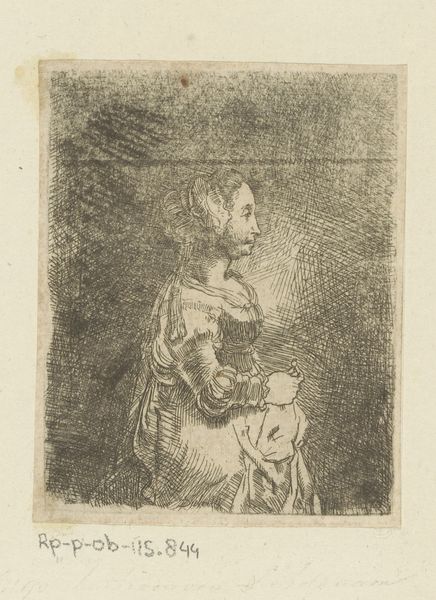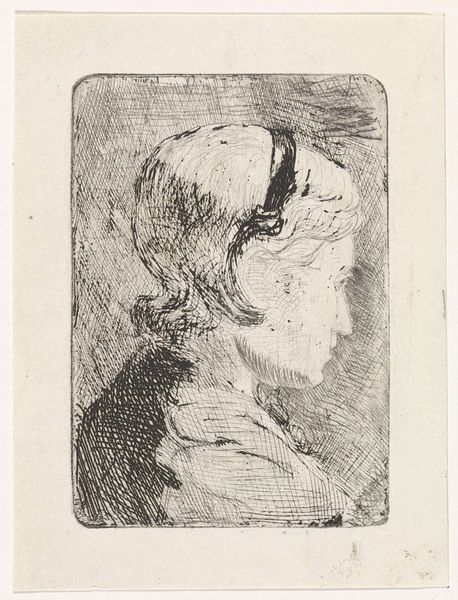
print, etching
#
portrait
#
dutch-golden-age
# print
#
etching
#
figuration
#
realism
Dimensions: height 201 mm, width 140 mm
Copyright: Rijks Museum: Open Domain
Editor: This is Wally Moes's "Meisje met kap op het hoofd," made sometime between 1866 and 1918. It’s an etching, giving it such delicate detail. It feels incredibly intimate, like a stolen glance. What stands out to you from a formal perspective? Curator: Note the strategic use of hatching and cross-hatching to build form. Observe how line density modulates, creating shadow and suggesting depth, yet also flattening areas for visual contrast. Are you drawn to specific compositional choices? Editor: Definitely the contrast between the detailed lines of the girl's figure and the almost blurred background behind her. It really isolates her. How does that interplay of line and space function, structurally? Curator: Precisely. The focused, intricate linework of the figure versus the blurred, undefined background space establishes a clear visual hierarchy. The variation in line weight helps create the overall tonal range in the piece. Do you see a semantic meaning through these formal choices? Editor: It feels like the artist wanted us to really consider this individual, to contemplate on their internal world, isolated in thought. Curator: Interesting. Perhaps we should then address how Moes created form and mood using very delicate lines that guide our vision from the subject’s draped head-covering through the delicate rendering of light on their body? It allows for the etching to breathe without losing the weight of the figure within the frame. What do you make of the overall effect now? Editor: I see it. Before, I was thinking of the contrast as simply a separation. But, now, it feels more about inviting us to pause and truly *see* the girl. Curator: Indeed, we can read this choice in how she constructs both depth and a certain contemplative atmosphere by solely relying on formal construction choices. There’s beauty in recognizing how it guides the experience beyond just what’s depicted, wouldn’t you say? Editor: Absolutely! I never would have thought I could draw so many observations from a composition if not for this formal analysis.
Comments
No comments
Be the first to comment and join the conversation on the ultimate creative platform.
